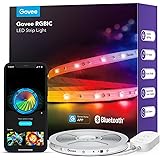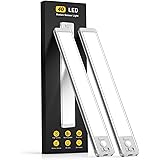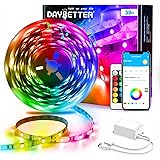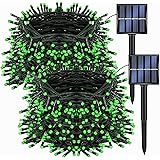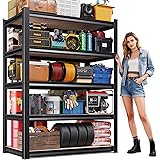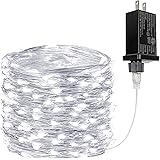Embarking on the journey of home improvement can feel incredibly rewarding, especially when projects are successfully completed with your own hands. However, the initial step often involves understanding which tools are truly essential for a beginner’s arsenal. Without the right equipment, even simple tasks can become frustrating or impossible. This article, designed to complement the video above, aims to clarify the must-have DIY home project tools, ensuring that your tool collection is both effective and efficient from day one.
Many individuals find themselves asking, “Where should I spend my money when starting a tool collection?” The answer often lies in versatility and fundamental utility. The focus here will be on acquiring a basic set of tools that can address a vast array of common household repairs and projects, rather than specialized equipment that may see infrequent use. This approach helps in building a solid foundation, allowing for expansion as specific project needs arise.
Building Your Basic Tool Collection: Essential DIY Home Project Tools
Acquiring a core set of tools is foundational for any DIY enthusiast. These aren’t just for complex renovations; they are invaluable for everyday fixes, assembly tasks, and light home maintenance. Let us explore the critical tools that are considered indispensable for tackling various home projects effectively.
1. The Jigsaw: A Versatile Cutting Companion
Often underestimated, the jigsaw is consistently regarded as a powerhouse of versatility among DIY home project tools. This handheld power tool is adept at cutting various materials with precision and ease, making it a favorite for many users. While other saws excel at specific cuts, the jigsaw’s adaptability is truly remarkable.
- **Material Versatility:** Imagine needing to cut a precise hole in drywall for a new light fixture. A jigsaw, equipped with the correct blade, handles this with minimal effort. Furthermore, it is suitable for cutting carpet, various types of tile, plastics, different metals, and, of course, wood.
- **Intricate Cuts:** This tool particularly shines when intricate designs or curved cuts are required. Unlike a circular saw, which is best for straight lines, a jigsaw allows for fluid movement, enabling the creation of circles and custom shapes in materials like wood, greatly enhancing creative project possibilities.
- **Blade Significance:** The key to unlocking the jigsaw’s full potential lies in its blade selection. A wide array of blades is available, each specifically designed for different materials and cut types. It is often recommended that high-quality blades are used, as they significantly impact cut quality and tool performance. Importantly, jigsaw blades are typically very affordable and are easily interchangeable, which adds to the tool’s cost-effectiveness compared to the more expensive blades required for table or circular saws.
- **Achieving Straight Cuts:** While jigsaws are known for curves, straight cuts can also be achieved with practice and the right technique. By clamping a straight edge to your workpiece and guiding the jigsaw along it, surprisingly clean and accurate lines can be created. In fact, under certain conditions, a jigsaw has been observed to produce a smoother cut than a table saw, especially when the table saw blade is worn.
2. The Classic Claw Hammer: A Multifunctional Hand Tool
No collection of DIY home project tools would be complete without a reliable claw hammer. This ubiquitous tool is indispensable for countless tasks around the house, extending far beyond its primary function of driving and removing nails. Its robust design makes it a staple in every homeowner’s toolkit.
- **Driving and Extracting:** The most obvious use for a hammer is securing objects with nails or carefully extracting them with the claw end. This function is critical for everything from hanging pictures to assembling furniture or performing light demolition.
- **Versatile Prying and Shaping:** Imagine needing to gently pry apart two pieces of wood during a renovation project. The claw of the hammer can be utilized for this purpose. It can also assist in minor demolition, breaking small pieces of ice, or even shaping materials if a delicate touch is applied.
- **Sizing for Utility:** For a foundational tool kit, a mid-sized hammer is typically advised. A hammer of about 16 to 20 ounces often strikes a good balance, offering sufficient weight for driving larger nails while remaining manageable enough for more delicate tasks. A good quality hammer, such as those from Kobalt, is designed to last for many years, providing enduring utility.
3. Essential Screwdriver Set: Precision and Grip
A comprehensive set of screwdrivers is unequivocally one of the most frequently reached-for DIY home project tools. Regardless of the project, the need for a screwdriver, whether flathead or Phillips, arises consistently. Their importance cannot be overstated for assembly, repair, and general maintenance tasks.
- **Variety is Key:** A basic set should include an assortment of flathead (slot) and Phillips head screwdrivers in various sizes. Torx and square-drive (Robertson) bits are also increasingly common in modern products, so having adapters or specialized screwdrivers can be beneficial.
- **Quality Investment:** Investing in a high-quality screwdriver set is a wise decision. Inferior screwdrivers can easily strip screw heads or wear down, leading to frustration and potential damage. A good quality set, often featuring comfortable grips and durable tips, can easily last for two decades or more, making it a lasting asset in your collection of DIY home project tools.
- **Beyond Screws:** While primarily used for fasteners, screwdrivers are sometimes employed for light prying or for marking pilot holes, though caution is always advised to prevent damage to the tool or the workpiece.
4. The Utility Knife: Sharpness for Every Task
The humble utility knife, or razor knife, is an incredibly versatile and fundamental addition to any collection of DIY home project tools. Its simple design belies its extensive utility, from intricate cutting tasks to everyday opening needs. It is a tool often kept within easy reach due to its broad applicability.
- **Cutting Materials:** Imagine needing to trim fiberglass insulation for a basement finishing project; a utility knife is an ideal choice. It is also routinely used for scoring and cutting drywall, cutting carpet, and effectively removing old caulk from around sinks or showers.
- **Everyday Applications:** Beyond construction-related tasks, a utility knife is invaluable for opening packages, trimming excess materials, and preparing surfaces. Its sharp, replaceable blades ensure that a clean cut can always be achieved.
- **Safety Considerations:** Modern utility knives often feature retractable blades and locking mechanisms, which are important for safe handling and storage. Regularly replacing dull blades is advised, as a sharp blade is safer and more efficient than a dull one that requires excessive force.
5. The Tape Measure: Accuracy in Every Dimension
For any successful DIY project, accuracy is paramount, and a reliable tape measure is therefore an indispensable tool. Whether you are measuring for new furniture, framing a wall, or calculating material quantities, this tool ensures that everything fits perfectly and looks professional. Its importance in the realm of DIY home project tools cannot be overstated.
- **Precision is Critical:** A tape measure allows for precise dimensional verification, preventing costly mistakes due to inaccurate cuts or placements. Imagine purchasing a new appliance only to find it does not fit the allotted space; accurate prior measurement avoids such predicaments.
- **Key Features:** When selecting a tape measure, features like an auto-locking mechanism, a wide and rigid blade (to extend further without bending), and clear, easy-to-read markings (including fractional increments) are often desired. Magnetic tips can also be incredibly useful for working alone or in difficult-to-reach metal areas.
- **Beyond Construction:** Its utility extends beyond construction. A tape measure is frequently used for interior decorating, furniture arrangement, and verifying dimensions for online purchases, making it a ubiquitous household item.
Powering Your DIY Endeavors: Modern Tools for Modern Projects
While hand tools form the backbone of a basic toolkit, modern DIY projects frequently necessitate the power and efficiency offered by cordless electric tools. These tools significantly reduce manual effort and speed up project completion, making them essential additions to any growing collection of DIY home project tools.
6. The Cordless Drill & Drill Bit Set: Drilling and Driving Power
Perhaps the most versatile power tool for home projects, a cordless drill combined with a quality set of drill bits is an absolute must-have. This combination dramatically simplifies tasks involving drilling holes and driving fasteners, saving considerable time and effort. It stands out as one of the most frequently used DIY home project tools.
- **Drill vs. Impact Driver:** While many combo kits include both a drill and an impact driver, understanding their primary functions is beneficial. A drill excels at creating holes and can also drive screws. An impact driver, with its rotational and percussive action, is specifically designed for tightening and loosening stubborn nuts, bolts, and long screws, offering greater torque with less effort. If only one can be afforded initially, the drill is recommended due to its hole-drilling capability.
- **Voltage Considerations:** Drills are available in various voltages, with 12-volt and 18-volt (or 20-volt Max) being common. An 18-volt drill offers a good balance of power and portability for most DIY tasks, capable of drilling through studs and other demanding materials. Smaller 12-volt impact drivers are excellent for tight spaces and lighter driving tasks, often being surprisingly powerful and less fatiguing to use over extended periods. Brands like Milwaukee and DeWalt are widely respected for their quality and performance.
- **Drill Bit Variety:** A drill is only as useful as its bits. A good set should include bits for wood (brad point, spade bits), metal (high-speed steel or titanium-coated), and masonry (carbide-tipped) in various sizes. Always using the correct bit for the material is crucial for efficient drilling and bit longevity.
- **Innovative Uses:** Beyond its core functions, a drill can be surprisingly adaptable. For example, it can be used to neatly twist multiple wires together by securing one end and rotating the other with the drill. This technique creates a professional, tangle-free bundle, simplifying wiring installations.
7. Basic Socket Set: For Nuts and Bolts
When tasks involve tightening or loosening nuts and bolts, a basic socket set becomes an invaluable member of your DIY home project tools. From assembling flat-pack furniture to performing minor automotive repairs or securing fixtures, sockets provide the necessary grip and leverage that screwdrivers cannot.
- **Set Components:** A basic socket set typically includes a ratchet handle, various sized sockets (both standard/SAE and metric are usually desired), and sometimes extensions. Many sets also incorporate screwdriver bits and Torx bits, making them remarkably versatile for various fastening needs.
- **Drive Sizes:** Socket sets commonly come in different drive sizes: 1/4-inch, 3/8-inch, and 1/2-inch. For most general household DIY, a 1/4-inch drive set is often sufficient due to its compact size and versatility for smaller fasteners. However, for heavier mechanical work or tasks requiring more torque, a 3/8-inch or even 1/2-inch drive with a longer ratchet handle may be considered.
- **Integration with Power Tools:** The utility of a socket set is further enhanced by its compatibility with impact drivers or drills (using an adapter). This allows for much quicker tightening and loosening of fasteners, particularly when dealing with many similar bolts.
8. A Comprehensive Pliers Set: Grip, Cut, and Bend
A diversified set of pliers is another cornerstone of a well-equipped DIY toolkit. These hand tools are designed for gripping, bending, twisting, and cutting various materials, making them essential for electrical work, plumbing, and general repairs. Having a selection of types ensures the right tool is always available for the specific task at hand.
- **Variety for Functionality:** It is generally recommended to acquire a set that includes several types of pliers. This typically includes standard slip-joint pliers for general gripping, needle-nose pliers for precision work in tight spaces, and cutting pliers (often called “dikes” or diagonal cutters) for snipping wires or small metal pieces. Groove-joint pliers (like Channel Locks) are also highly versatile for gripping pipes and larger objects.
- **Quality and Comfort:** Brands such as Channel Lock, Tekton, and Kobalt are recognized for producing durable and effective pliers. Investing in a good quality set means the tools will withstand significant use without falling apart. Ergonomic handles are also a crucial feature, as they reduce hand fatigue during prolonged use.
- **Broad Applications:** Imagine needing to grip a stubborn nut, bend a piece of wire for a project, or cut an old electrical cable. A suitable pair of pliers from your set will accomplish these tasks with ease, making them indispensable for plumbing, electrical work, and intricate household repairs.
Safety and Organization for Your Tool Kit
While the excitement of acquiring new DIY home project tools is understandable, prioritizing safety and ensuring proper organization are equally vital aspects of effective home project management. These elements protect both the user and the tools themselves, contributing to a more efficient and accident-free working environment.
9. Voltage Detector & Safety Glasses: Prioritizing Your Well-being
Safety should always be the foremost concern in any DIY endeavor, and two simple items, a voltage detector and safety glasses, embody this principle. They represent a minimal investment for maximum protection, making them critical elements in your collection of DIY home project tools.
- **The Voltage Detector:** This non-contact device is an absolute lifesaver when performing electrical work. Imagine needing to replace a light switch or an outlet; a voltage detector can quickly and safely confirm whether a circuit is live or de-energized, preventing the risk of electric shock. It operates by detecting the electromagnetic field around live wires, providing an audible or visual alert without needing direct contact. Its ease of use makes it an indispensable safety tool for anyone performing even minor electrical repairs.
- **Safety Glasses:** Protecting your eyes is paramount when working with tools. Whether you are cutting wood, drilling into metal, or breaking apart old materials, flying debris is a constant hazard. Safety glasses act as a barrier, preventing serious eye injuries. It is strongly advised that safety glasses are worn for virtually every task, even those that seem innocuous, as accidents can occur unexpectedly.
- **Broader PPE Considerations:** While not explicitly listed as individual tools, other forms of personal protective equipment (PPE) should also be considered. This includes sturdy gloves to protect hands from splinters and abrasions, ear protection when operating noisy power tools, and a dust mask when creating airborne particulates.
10. Tool Organization: The Unsung Hero of Efficiency
Having a fantastic collection of DIY home project tools is only half the battle; the other half involves keeping them organized and accessible. A proper storage solution not only protects your investment but also significantly enhances efficiency, saving valuable time that would otherwise be spent searching for misplaced items.
- **Protection and Portability:** A quality toolbox or tool bag provides essential protection for your tools against dust, moisture, and damage. Soft-sided tool bags, often featured in videos, are particularly useful as they are less likely to scratch finished floors and typically feature numerous pockets and compartments for systematic organization.
- **Accessibility and Efficiency:** Imagine trying to find a specific screwdriver amidst a jumbled pile of tools. A well-organized storage solution, with designated places for each item, eliminates this frustration. Many tool bags and boxes come with specialized inserts or dividers that allow for neatly arranged pliers, screwdrivers, utility knives, and larger power tools like jigsaws and drills.
- **Selecting the Right Storage:** Options range from soft fabric bags, ideal for portability and floor protection, to robust hard plastic toolboxes, offering greater impact resistance, and even larger rolling tool chests for extensive collections. The best choice depends on the size of your collection and how frequently you need to transport your DIY home project tools.


